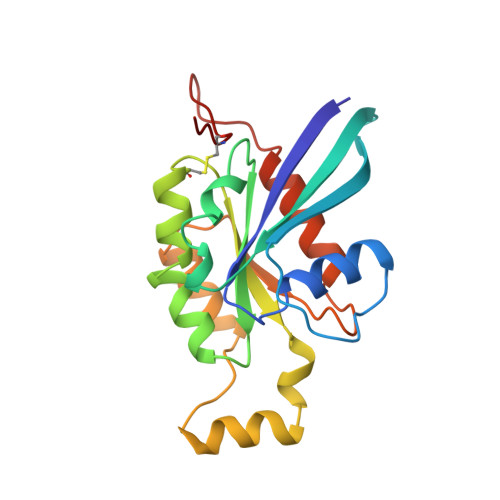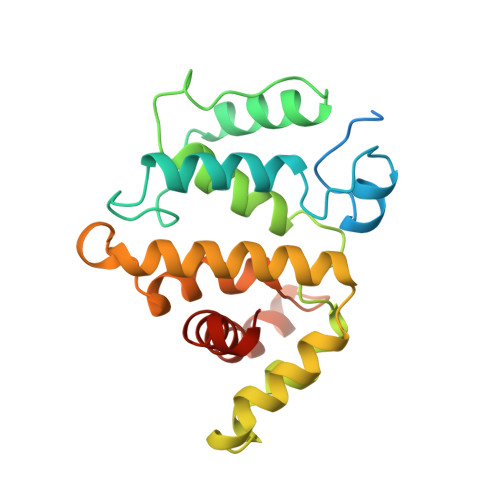Structures of Cdc42 bound to the active and catalytically compromised forms of Cdc42GAP.
Nassar, N., Hoffman, G.R., Manor, D., Clardy, J.C., Cerione, R.A.(1998) Nat Struct Biol 5: 1047-1052
- PubMed: 9846874
- DOI: https://doi.org/10.1038/4156
- Primary Citation of Related Structures:
1GRN, 2NGR - PubMed Abstract:
The Rho-related small GTP-binding protein Cdc42 has a low intrinsic GTPase activity that is significantly enhanced by its specific GTPase-activating protein, Cdc42GAP. In this report, we present the tertiary structure for the aluminum fluoride-promoted complex between Cdc42 and a catalytically active domain of Cdc42GAP as well as the complex between Cdc42 and the catalytically compromised Cdc42GAP(R305A) mutant. These structures, which mimic the transition state for the GTP hydrolytic reaction, show the presence of an AIF3 molecule, as was seen for the corresponding Ras-p120RasGAP complex, but in contrast to what has been reported for the Rho-Cdc42GAP complex or for heterotrimeric G protein alpha subunits, where AIF4- was observed. The Cdc42GAP stabilizes both the switch I and switch II domains of Cdc42 and contributes a highly conserved arginine (Arg 305) to the active site. Comparison of the structures for the wild type and mutant Cdc42GAP complexes provides important insights into the GAP-catalyzed GTP hydrolytic reaction.
Organizational Affiliation:
Department of Pharmacology, College of Veterinary Medicine, Cornell University, Ithaca, New York 14853, USA.


















